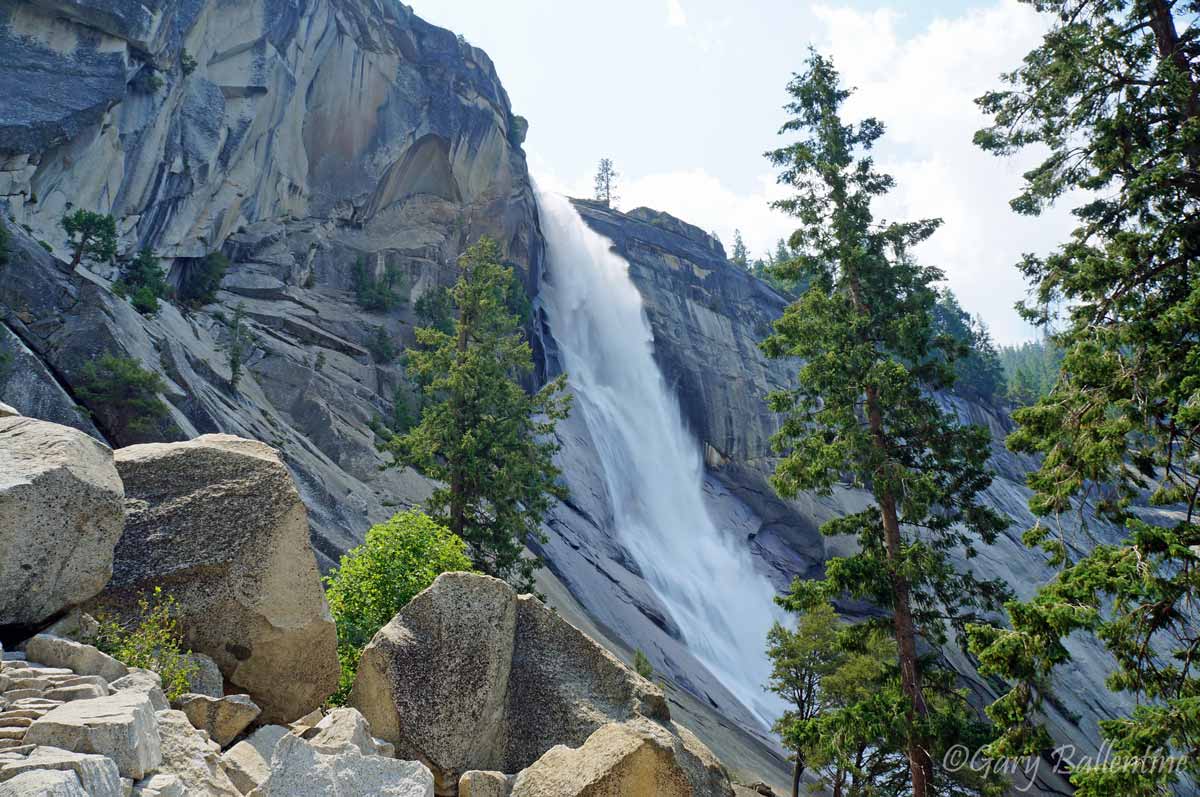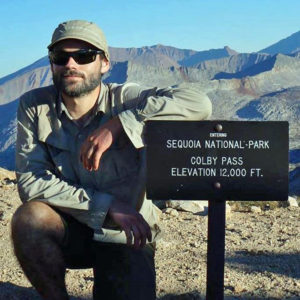How to Get a John Muir Trail Hiking Permit

In 1998, fewer than 500 people hiked the John Muir Trail. In 2009, that number was closer to 2,000, and in 2015, when the current quota was implemented, that number rose to 3,500. The extreme popularity of the trail has resulted in several thousand applicants each year, and the National Park Service found itself obligated to implement a quota to limit human impact on the trail and preserve the wilderness experience.
Is it Hard to Get a John Muir Trail Permit?
Yes and no. The massive popularity of the John Muir Trail has resulted in a strict limit on the number of hikers who can begin the trail each day, and getting a permit for the trail is incredibly competitive. Roughly 97% of all applications are denied daily, so your best option is to apply for a range of dates, which is exactly what the current system is designed for.
The permitting process for the John Muir Trail can seem confusing at first, but if you hike the full trail, the process is rather simple. Everyone hiking the trail needs a valid permit, and if you start in Yosemite, then you only need one permit to hike the entire trail. If you start further south, you might need multiple permits, but more on that later.
The lottery for John Muir Trail permits begins 168 days prior to your selected start date and applications are accepted 2 days prior to the lottery date, so you should submit your application 170 days in advance. For most people, this means starting your application process February 1st and reapplying every two weeks until you are granted a permit.
How It Works
If you start in Yosemite, then you need a Yosemite permit. The park implements what is known as a “Donahue Exit Quota,” their way of limiting how many people are allowed to exit the park on the John Muir Trail over Donahue Pass. This limit is 45 people per day, and it’s divided up between a selection of approved trailheads:
- 20 permits are available by reservation for hikers starting at Happy Isles, Glacier Point, and Sunrise Lakes.
- 15 Permits are available by reservation for hikers starting at Lyell Canyon in Tuolumne Meadows
- 10 Permits are available on a first-come, first serve basis beginning the day before your departure at Lyell Canyon
How to Submit a Permit Application
Your best and only real chance at a permit is to apply for a 2 week window every two weeks until you are awarded a permit. You can begin the application process here: https://yosemite.org/jmt-rolling-lottery-application/
How to Fill Out the Application
You need to provide this information on your application:
• Top 5 desired entry trailheads in order of preference
• Where you plan to camp your first night for each trailhead
• First and last desired start dates (up to a two week window)
• Anticipated exit date (just an estimate)
• Exit trailhead (Whitney Portal)
• The number of people in your group
• If you want to hike Half Dome or not
Once the permit has been processed, you will receive a confirmation email. You will then receive daily emails notifying you if your application was approved or denied for that day. If it’s denied, it will rollover to the next day. If it’s approved, your application will be pulled and you will have 14 days to pay a $5 processing fee, $5 per person fee, and $10 Half Dome fee (if you selected to hike it).
Snagging a Permit from a Cancellation
Can’t get a permit? Your best bet, short of getting a walkup permit, is to wait for someone to cancel. The full trailhead report shows what trailheads are full and when, and when a spot opens up, CALL THE RANGER STATION IMMEDIATELY. Lots of people end up cancelling their hike for various reasons, and the chances of getting a permit this way are actually pretty good (I’ve done it successfully). More spots tend to open up the closer you get to your departure date, but cancellations can and do happen at any time. Check the full trailhead report religiously! https://www.nps.gov/yose/planyourvisit/fulltrailheads.htm
Walkup Permits: Fist-Come, First-Serve
10 permits are available daily at the Tuolumne Meadows ranger station beginning at 10AM the day before departure. This means that if you want to start hiking on Sunday, you need to be in line EARLY on Saturday to get your permit when it becomes available at 10AM. Camping is not allowed while you’re waiting in line, and it’s not uncommon for people to start lining up as early as 5AM. If you are caught sleeping, you will be denied a permit.
Wondering what to do for the rest of the day and where to camp? Wander around Tuolumne Meadows, hike to Cathedral Lakes (the prettiest part of the trail that you are being forced to skip), and spend the night at the backpacker’s camp for free in Tuolumne Meadows.
This Sounds Like a Pain. Do I Really NEED a Permit?
YES. The park rangers check permits regularly, especially at prime spots for starting, ending, and where they think people might sneak onto the trail. They also hike the entire length of the trail during the summer months. If you are caught without a permit, you will be cited, fined, and escorted off the trail. If getting a permit sounds like too much work, then you should consider alternative hiking options, of which there are plenty.
This is the *official* starting point of the John Muir trail and is the most sought after. Go ahead and put it as your first choice, you might as well. If you get it, then you are one of the extremely lucky ones. If you don’t get it but get another trailhead instead, then you are still one of the lucky ones.
Your hike from Happy Isles starts off at 4,000 feet in Yosemite Valley and passes by two of the park’s most famous waterfalls, Nevada Falls and Vernal Falls, before passing by Half Dome. These waterfalls are worthy of a trip to Yosemite in their own right, but the trail is very, very crowded with day-hikers.
Your first night camping choices are Little Yosemite Valley and Sunrise/Merced Lake. Little Yosemite Valley is a relatively short distance from the trailhead and puts you in a good spot for hiking Half Dome. Sunrise/Merced Lake lets you camp anywhere along Sunrise Creek past Half Dome, and is the most common choice among JMT’ers, although this puts you at 6,000 feet elevation gain the first day (ouch!).

The Sunrise Lakes trailhead is near Tenaya Lake at 8,150 feet elevation on the way up to Tuolumne Meadows. Tenaya Lake is beautiful, but the first few miles of the trail are mostly steep, hot switchbacks with limited views. It joins the trail just west of Sunrise Lakes, and puts you in a perfect spot for bagging Cloud’s Rest, a great alternative to Half Dome that actually gives you better views of the park. No permit is required for Cloud’s Rest. Sunrise Lakes is a great area to camp, and there is even a High Sierra Camp nearby with a spigot you can fill up your water bottle at.

This trailhead starts at one of the best vistas in the park. At 7,214 feet elevation, it saves you some climbing, and gives you a great view of the park along much of the hike as it traverses the high country along a ridge. It passes by Illilouette Falls before nearing Vernal and Nevada Falls, but is a solid hour drive from Yosemite Valley, making getting there more of a challenge.
This is where most hikers start their trek due to permit availability. It skips the first 15 miles of the trail, but also gives you a 6,000 foot advantage over people starting at Happy Isles, not to mention the first 10 miles from here are flat and follow a meandering river through a beautiful canyon before heading up to Donahue Pass.
If you start here, I would suggest day hiking at least day hiking to Cathedral Lakes, as it really is one of the most scenic parts of the trail. Alternatively, you could plan a weekend trip some other time where you hike past the waterfalls in the Valley and visit Cathedral Lakes.

Check out the John Muir Trail FAQ page on Yosemite’s website here: https://www.nps.gov/yose/planyourvisit/jmtfaq.htm
